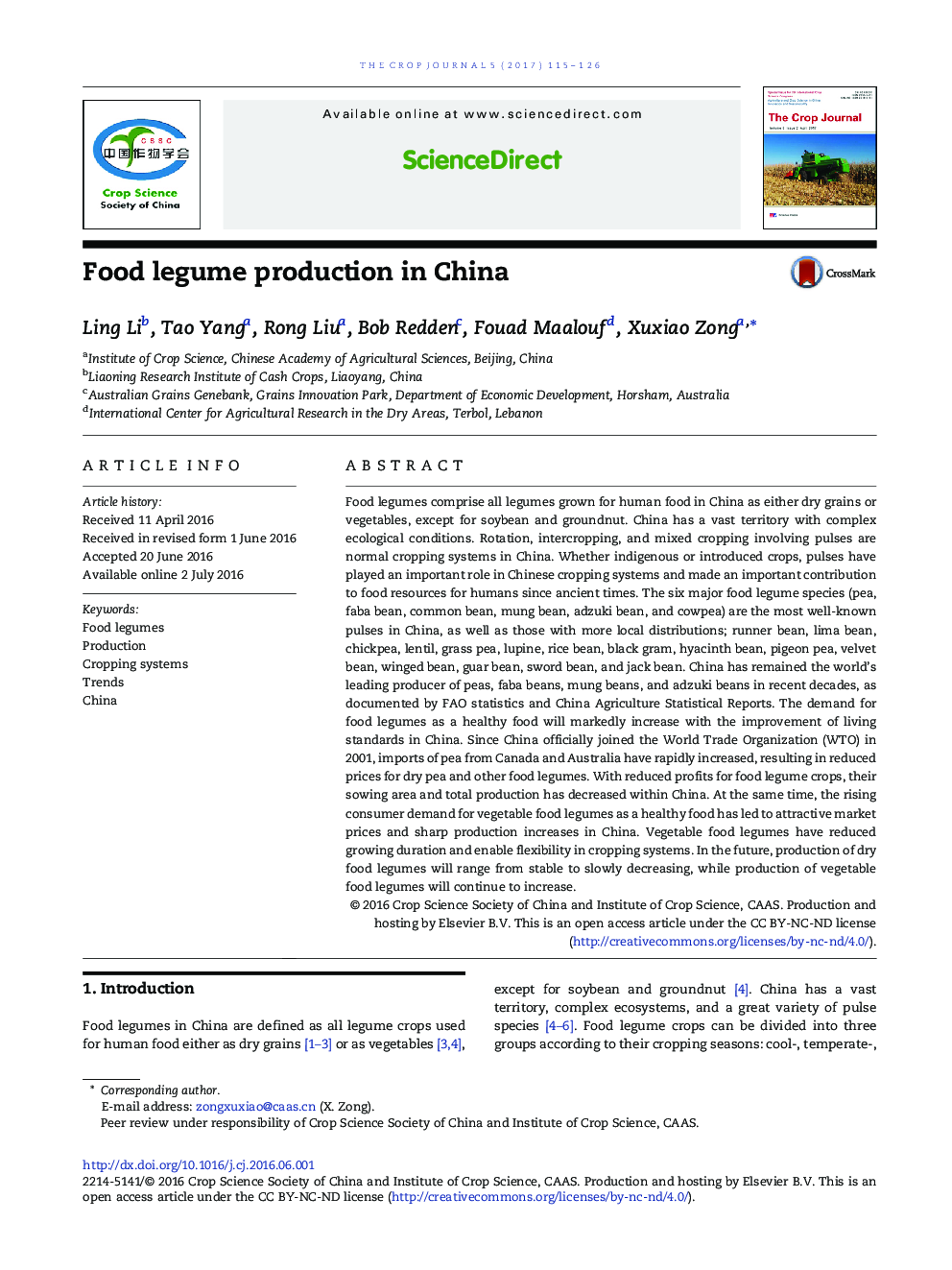| کد مقاله | کد نشریه | سال انتشار | مقاله انگلیسی | نسخه تمام متن |
|---|---|---|---|---|
| 5520814 | 1401230 | 2017 | 12 صفحه PDF | دانلود رایگان |
Food legumes comprise all legumes grown for human food in China as either dry grains or vegetables, except for soybean and groundnut. China has a vast territory with complex ecological conditions. Rotation, intercropping, and mixed cropping involving pulses are normal cropping systems in China. Whether indigenous or introduced crops, pulses have played an important role in Chinese cropping systems and made an important contribution to food resources for humans since ancient times. The six major food legume species (pea, faba bean, common bean, mung bean, adzuki bean, and cowpea) are the most well-known pulses in China, as well as those with more local distributions; runner bean, lima bean, chickpea, lentil, grass pea, lupine, rice bean, black gram, hyacinth bean, pigeon pea, velvet bean, winged bean, guar bean, sword bean, and jack bean. China has remained the world's leading producer of peas, faba beans, mung beans, and adzuki beans in recent decades, as documented by FAO statistics and China Agriculture Statistical Reports. The demand for food legumes as a healthy food will markedly increase with the improvement of living standards in China. Since China officially joined the World Trade Organization (WTO) in 2001, imports of pea from Canada and Australia have rapidly increased, resulting in reduced prices for dry pea and other food legumes. With reduced profits for food legume crops, their sowing area and total production has decreased within China. At the same time, the rising consumer demand for vegetable food legumes as a healthy food has led to attractive market prices and sharp production increases in China. Vegetable food legumes have reduced growing duration and enable flexibility in cropping systems. In the future, production of dry food legumes will range from stable to slowly decreasing, while production of vegetable food legumes will continue to increase.
Journal: The Crop Journal - Volume 5, Issue 2, April 2017, Pages 115-126
